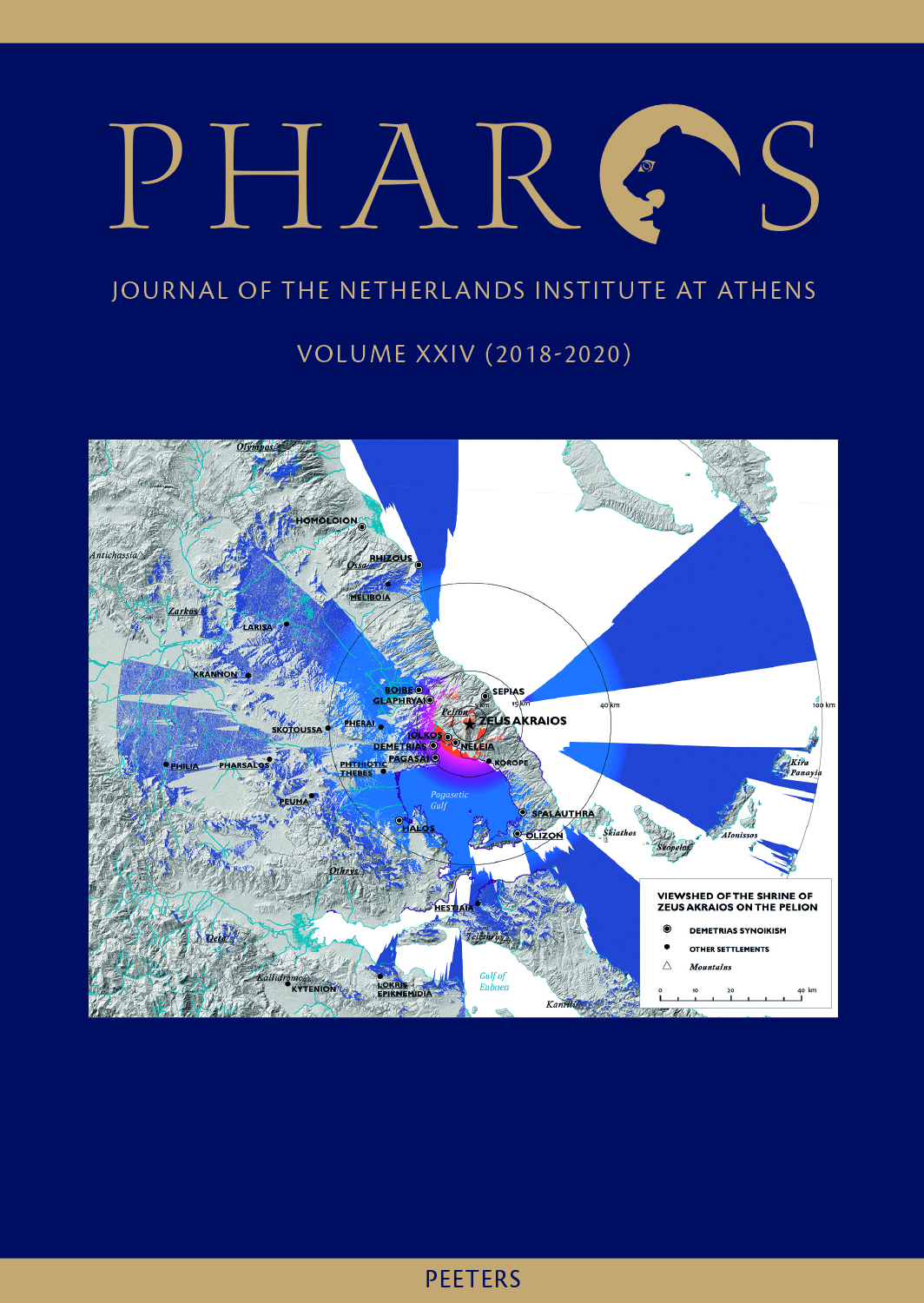 previous article in this issue previous article in this issue | next article in this issue  |

Preview first page |
Document Details : Title: Halos Subtitle: Preliminary Report of the 2015 Field Survey and the 2016 Trial Trenches at Magoula Plataniotiki Author(s): STISSI, Vladimir , HEYMANS, Elon , WAAGEN, Jitte , RONDIRI, Vasso , AGNOUSIOTIS, Dimitris , DIJKSTRA, Tamara , EFSTATHIOU, Despina Journal: Pharos Volume: 24 Date: 2018-2020 Pages: 113-136 DOI: 10.2143/PHA.24.0.3289833 Abstract : This article offers a very brief report on the 2015 survey campaign around Halos that formed the conclusion of the revisit programme previously presented in this journal, followed by a somewhat longer preliminary presentation of the 2016 excavation season at Magoula Plataniotiki, which is also a continuation of previous work at the site reported in this journal. As in the past, the fieldwork was done by the universities of Groningen and Amsterdam and the Ephorate of Antiquities of Magnesia; in 2016, a delegation from the University of Alberta participated in the excavation as well. The survey season confirmed and refined results of the 2011-2013 campaigns. While the 2016 excavation season partly continued trenches opened in 2013, it also covered parts of the site that had not been explored yet. Three new trenches were laid out in areas where aerial photographs and geophysical research done in 2015 suggested the presence of features that could clarify the planning and chronology of the site. One of the new trenches explored the western edge of the site, which seems to be bordered by a pebble-paved street. This could not be dated yet. Another new trench indicates that the north-eastern part of the site, where geophysical research and aerial photographs show structures that do not follow the general orientation of streets and buildings further west, was abandoned in the Hellenistic period, while most other trenches indicate continuing habitation and other use. However, foundations of a large and possibly monumental structure encountered in an extension of one of the existing trenches indicate that even when shrinking, the Hellenistic settlement still contained impressive buildings. The intensive Classical and Hellenistic use of the site visible in all excavated areas does not seem have had a follow up, but in most trenches remains of later activities, apparently mainly related to reuse of materials, have been encountered. |
 |


